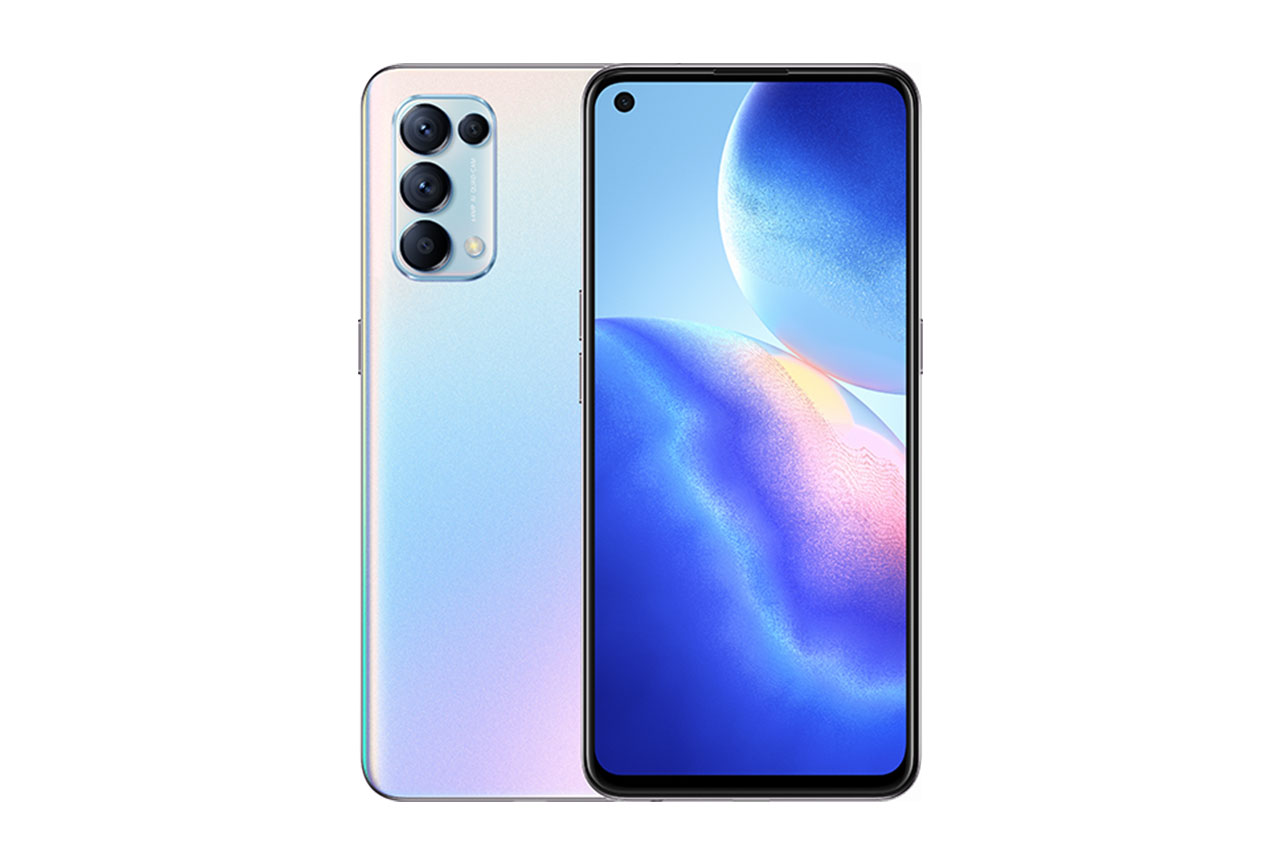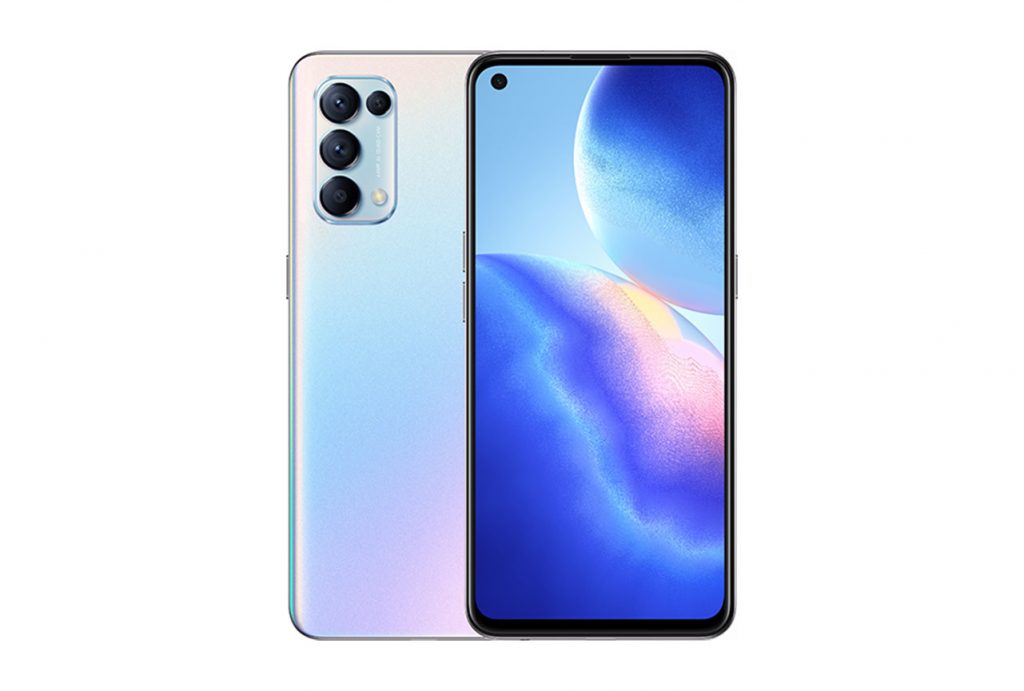In March 2021, Oppo came out with the latest (and most economical) member of its Find X3 series, the Find X3 Lite, at a price that places it in our high-end ($400-599) segment. Coming with a powerful 65W charger, the Find X3 Lite features a Qualcomm Snapdragon 765G chipset, a 1080 x 2400 AMOLED display, and a quad-camera setup with a 64 MP main camera.
Our Battery protocol engineers recently tested the Oppo Find X3 Lite; their most important findings are in this review.
Key specifications:
- Battery capacity: 4300 mAh
- 65W charger included
- 6.4-inch, 1080 x 2400, 90 Hz AMOLED display
- Qualcomm Snapdragon 765G (7nm) chipset, 5G
- Tested ROM / RAM combination: 128 GB + 8 GB
About DXOMARK Battery tests: For scoring and analysis in our smartphone battery reviews, DXOMARK engineers perform a variety of objective tests over a week-long period both indoors and outdoors. This article highlights the most important results of our testing. (See our introductory and how we test articles for more details about our smartphone Battery protocol.)
Test summary
Scoring
Sub-scores and attributes included in the calculations of the global score.

Oppo Find X3 Lite


Key performances
These key points are derived from the lab measurements during testing and do not figure into the overall score. The lab measurements, however, are used for the overall score.
 138th
138th
 32nd
32nd
Pros
- Very fast charging with good charger efficiency
- Very good performance for 5-minute quick boost charging
- Lower consumption than competitors for gaming
Cons
- Provides 46 hours of autonomy in a moderate usage
- Higher consumption than competitors when charger (without phone) is plugged into a power outlet
The Oppo Find X3 Lite made good use of its 65W charger, with its battery going from fully depleted to fully charged in just over 42 minutes. In a similar vein, its boosted power by 1% in only 24 seconds while gaming and charging at a low battery level. The Oppo device’s overall score would have been higher had it performed similarly well in our autonomy tests; however, it provided just 46 hours of autonomy for average usage. It did well for overall power efficiency.
We compared the Oppo Find X3 Lite’s performance in several key categories with two other high-end devices, the OnePlus 8T and the Xiaomi Mi 10T Pro 5G; battery capacity, charger, display type and resolution, and processor specifications for all three devices are shown in the table below.
| Oppo Find X3 Lite | OnePlus 8T | Xiaomi Mi 10T Pro 5G | |
| Battery (mAh) | 4300 | 4500 | 5000 |
| Charger (W) | 65W | 65W | 33W |
| Display type | AMOLED | AMOLED | IPS LCD |
| Resolution | 1080 x 2400 | 1080 x 2400 | 1080 x 2400 |
| Processor | Qualcomm Snapdragon 765G (7 nm) | Qualcomm Snapdragon 865 (7 nm) |
Qualcomm Snapdragon 865 (7 nm) |
Autonomy (50)
How long a battery charge lasts depends not only on battery capacity but also on other aspects of the phone’s hardware and software. The DXOMARK Battery autonomy score is composed of three performance sub-scores: (1) Stationary, (2) On the go, and (3) Calibrated use cases. Each sub-score comprises the results of a comprehensive range of tests for measuring autonomy in all kinds of real-life scenarios.
With an overall Autonomy score of 50, the Oppo FindX3 Lite came in third in this category among the three high-end devices we compare in this review — quite a ways behind the 62 points of the Xiaomi Mi 10T Pro 5G, but two points behind the OnePlus 8T (what makes the two-point lead interesting is that the Oppo battery is smaller than the OnePlus’s).
Among the three smartphones in this comparison, the Oppo device’s linearity is the best controlled, meaning that the percentage of power showing on its indicator is what you really have left, so you won’t be unpleasantly surprised by any unexpected drops in power toward the end of the battery charge.
And now let’s dig a bit deeper into Oppo’s performance in our autonomy tests.

Stationary
Oppo Find X3 Lite
51
104
A robot housed in a Faraday cage performs a set of touch-based user actions during what we call our “typical usage scenario” (TUS) — making calls, video streaming, etc. — 4 hours of active use over the course of a 16-hour period, plus 8 hours of “sleep.” The robot repeats this set of actions every day until the device runs out of power.
The Oppo FindX3 Lite, like its OnePlus competitor, provides less than 2 days of autonomy in our TUS scenario (both coming in at 46 hours) — shorter by 15 hours than the Xiaomi Mi 10T Pro 5G, as shown below:

On the go
Oppo Find X3 Lite
58
96
Using a smartphone on the go takes a toll on autonomy because of extra “hidden” demands, such as the continuous signaling associated with cellphone network selection, for example. DXOMARK Battery experts take the phone outside and perform a precisely defined set of activities while following the same three-hour travel itinerary for each device.
The Oppo Find X3 Lite showed average autonomy in our On the go use cases, though it had slightly better autonomy for navigation than its competitors, despite its smaller battery capacity.

Calibrated
Oppo Find X3 Lite
55
100
For this series of tests, the smartphone returns to the Faraday cage and our robots repeatedly perform actions linked to one specific use case (such as gaming, video streaming, etc.) at a time. Starting from an 80% charge, all devices are tested until they have expended at least 5% of their battery power.
The Oppo Find X3 Lite did very well — better than its two competitors — when using Wi-Fi to stream video; however, it did worse than the other for video playback. And, too, it had quite poor autonomy compared to the others when making 3G phone calls.
Charging (92)
The DXOMARK Battery charging score is composed of two sub-scores, Full charge and Quick boost. Full charge tests assess the reliability of the battery power gauge; measure how long it takes to charge a battery from 0 to 80% capacity and from 80% to 100%; and measure how long and how much power the battery takes to go from an indicated 100% to an actual full charge. With the phone at different charge levels (20%, 40%, 60%, 80%), Quick boost tests measure the amount of charge the battery receives after being plugged in for 5 minutes.
Although a bit behind in autonomy, when it comes to charging, the Oppo Find X3 Lite shines, achieving a score of 92, two points behind OnePlus 8T, which does slightly better for both full charge and quick boost sub-attributes.

Full charge
Oppo Find X3 Lite
93
121
The Oppo Find X3 Lite’s total charging time (from 0 to full battery capacity) is 42 minutes, which is almost as good as OnePlus 8T’s time of 39 minutes, but is above the Xiaomi Mi 10T Pro 5G’s 1 hour 9 minutes. The Oppo’s 42-minute charging time from empty to full breaks down to 26 minutes to achieve an 80% charge, 10 more minutes to arrive at 100% as shown by the device UI, and then an additional 6 minutes to go from 100% showing on the UI to a full charge (which represents 5% of the true battery capacity).
As you can see in the chart below, the Oppo and OnePlus devices are very comparable, and both are much faster than the Xiaomi device:

Quick boost
Oppo Find X3 Lite
85
111
By plugging in the Oppo Find X3 Lite for 5 minutes when it has a battery charge under 50%, users will gain more than 5.5 hours of autonomy — 10 minutes more than the OnePlus 8T, and considerably more than the Xiaomi Mi 10 Pro 5G. While its 24 seconds is a bit less speedy in providing a 1% power boost than the OnePlus 8T (17 seconds!), the Oppo similarly leaves the Mi 10T Pro in the dust, with the Xiaomi device taking 2.5 minutes to raise its battery level by 1% in an extreme gaming use case.
| Oppo Find X3 Lite | OnePlus 8T | Xiaomi Mi 10T Pro 5G | ||
| Autonomy boost (hh:mm) | 20% | 5:56 | 5:42 | 3:50 |
| 40% | 5:27 | 5:17 | 3:58 | |
| 60% | 3:33 | 4:22 | 3:48 | |
| 80% | 3:05 | 2:30 | 3:23 | |
| Percentage boost | 20% | 18.9 % | 17.9 % | 9.5 % |
| 40% | 17.4 % | 16.6 % | 9.9 % | |
| 60% | 11.3 % | 13.7 % | 9.5 % | |
| 80% | 9.8 % | 7.8 % | 8.4 % | |
| Energy consumed | 20% | 3983 mWh | 3847 mWh | 2416 mWh |
| 40% | 3668 mWh | 3565 mWh | 2498 mWh | |
| 60% | 2384 mWh | 2941 mWh | 2397 mWh | |
| 80% | 2069 mWh | 1685 mWh | 2131 mWh |
Efficiency (74)
Our Efficiency score comprises two sub-scores, Charge up and Discharge. Charge up is the efficiency of a full charge (how much energy is drained from the wall outlet vs the energy capacity of the battery, as well as the efficiency of the charger and its residual consumption). Discharge is how much current the smartphone drains from the battery when in use (the ratio of battery capacity over autonomy). Better autonomy with a smaller battery means better efficiency.

Charge up
Oppo Find X3 Lite
75
105
The Oppo Find X3 Lite comes with an efficient 65W charge adapter, but at 87%, the Oppo Find X3 Lite is almost tied with the OnePlus adapter and is slightly behind Xiaomi Mi 10T Pro’s 90% adapter by a couple of points. However, in terms of nominal efficiency, which takes into account its entire charging system (including not just the charger but also internal smartphone circuits), the Oppo’s score of 79% compares with the OnePlus coming in at 81% and the Xiaomi a bit further behind at 76%.
When only the Oppo’s charger is plugged to the wall outlet (but the smartphone is unplugged), power consumption reaches almost 90mW, which nearly twice as much as the competition (46 mW for the Xiaomi, 45 mW for the OnePlus).

Discharge
Oppo Find X3 Lite
74
121
Although the Find X3 Lite has a lower discharge rate of streaming video using Wi-Fi and when gaming, it has a higher rate when making 3G calls.
Conclusion
The Oppo Find X3 Lite provides fast charging in all of our tests. Its main drawback is its autonomy, which (like the OnePlus 8T’s) lags a significant number of hours behind that of the Xiaomi Mi 10T Pro 5G. But while both the OnePlus and Oppo batteries can’t compete with the Xiaomi’s 5000 mAh battery in terms of battery life, they both do a much better job than the Xiaomi when it comes to charging, in no small measure due to their 65W charger (vs 33W for the Mi 10T Pro 5G). Further, the Oppo Find X3 Lite shows good power efficiency, with an overall Efficiency score that is just 3 points behind OnePlus 8T. In short, it’s fair to say that the Oppo holds its own in our high-end segment.





DXOMARK encourages its readers to share comments on the articles. To read or post comments, Disqus cookies are required. Change your Cookies Preferences and read more about our Comment Policy.